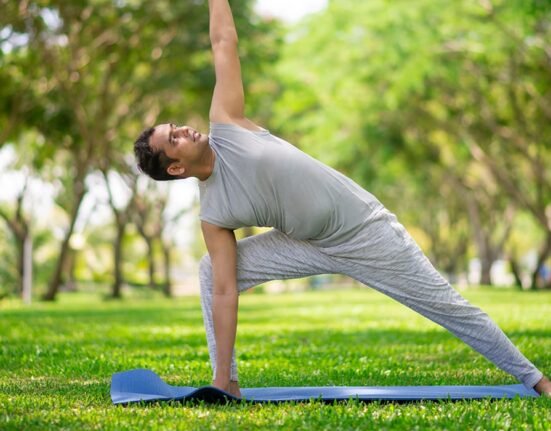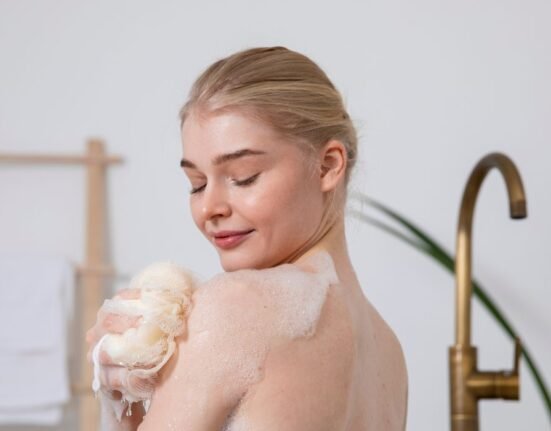One of the first things that new parents may wonder is if they require a special pumping bra. Presently, there are options for wear that are hands-free, but also, which to choose from them can be an issue, whether it is a supportive pumping bra, a regular nursing bra, or the pump’s own accessories, which is what it comes down to in terms of what will work best for them. They will go over what may work best for them.
Parts and Features of Wearable Breast Pumps
A wearable breast pump is an all-in-one device. The motor, which creates suction, a collection container for milk, and a breast shield that fits to your skin. All in one unit which fits in your bra, which is different from the older pumps that had separate parts and tubes.
How They Stay in Place
These pumps mould to the natural shape of the breast. They are designed to be light so they don’t pull at the bra. Also, they have a spill-proof design that creates a seal around the nipple to prevent leaks while pumping.
Working with Bras
Most typical bras may fit for use with wearables (pumps) if they:
- The right amount of stretch to hold the pump.
- Chest-sized cups to fit both the breast and the pump.
- A secure band that is held in place.
- Adjustable straps.
Common Problems
Most fit issues are easy to note. The pump may leak if there are spaces between the pump and the breast. It should not be painful or cause marks on the skin. The pump should go with the parent when moving around. If there are any of these issues, try adjusting the bra or how the pump is positioned.
1. Ways to Support Your Wearable Pump
A wearable pump requires good support in order to function properly and to prevent leaks. The best support methods keep the pump secure and at ease, whether at a desk or out walking.
2. Using the Pump’s Own Support System
Many of today’s wearable pumps do a great job on their own. They have curved out shells that fit the breast very well. Also, some like the Momcozy may include small silicone grips that improve the pump’s fit. While these inborn features may work for parents if they have the right body type and don’t move around a lot while pumping.
3. Wearing a Special Pumping Bra
Some types of pumping bras have supportive panels that include holes for breast pumps. These bras hold in the pump better than regular bras and also reduce the common issue of pumps falling out. They go for between $30–50 but are worth the price if a parent is a heavy user or needs to be on the go while pumping.
4. Using a Nursing Bra
A strong nursing bra may be used with the pump if it has a few must-haves. The bra must have firm elastic, a secure band that does not roll up, and full coverage of the pump, which will provide enough support for light movement while nursing. This is a great economy option, but may not do the best job for active movement or all-day use.
5. Adding Extra Support
Bra support may be improved by wearing a soft nursing bra under a regular one, or a form-fitting tank top over the bra and pump. Also, some parents use breast pump bands — wide elastic strips which wrap around the chest for extra security. These are quick solutions if there is a need for more support without going out to buy new bras.
What Affects the Need for Pump Support
Each parent’s unique situation with pumping is different, which in turn determines what extra support may be needed for a wearable pump.
- Pump Brand Differences: Different pump brands fit in different ways. Some are heavier, which requires better support, while lighter ones may do with less support. Also, some, like Momcozy, have flatter designs that integrate easily into regular bras. The pump’s weight and shape play a role in what support is needed.
- Body Shape Variations: Breast size and shape are very much a factor in what kind of support they will need from a pump. With larger breasts often it is often the case that more support is required to prevent the pump from pulling down. Wide-set breasts may require different support than those set closer together for the pump to be aligned properly. The firmness of breast tissue also plays a role in how the pump performs and stays in place.
- Activity Level: Daily routines play a large role. At a desk, less support is needed as compared to being on the go or bending over. For parents who have to move around while pumping, like teachers and nurses, they usually require better support. Even actions such as picking up a baby may affect how well the pump works.
- Pumping Duration: Longer pumping sessions often require better support. A 10-minute pump may do with a regular bra, but for sessions of 30 minutes or more, parents may want to invest in better support to prevent the pump from slipping. For parents who pump at multiple sessions during the workday, better support options should be considered for all-day comfort.
Benefits of a Good Pumping Bra for Using a Wearable Breast Pump
A good quality pumping bra is a game-changer for the pumping experience. Many parents report that proper support enables more efficient and comfortable pumping.
- Keeps the Pump from Moving: A right-fit pumping bra, which is properly made, will hold the pump in place. Strong elastic panels also stop the pump from moving around or tilting, which keeps the flanges in correct alignment with the nipples. This stable position helps maintain suction and removes the need for constant readjustments.
- Helps Pump More Milk: When the pump is in the right position, that is when better milk output is achieved. Consistent suction and proper flange alignment help empty the breasts. Many parents report that they produce more milk when their pump fits well and stays in place.
- Stops Milk Leaks: Good support reduces gaps between the pump and the breast. The firm hold of a pumping bra presses the pump’s edges against the skin, creating a better seal. This tight seal helps prevent milk from leaking around the edges of the pump, keeping clothes dry.
- Reduces Pain and Strain: The right pumping bra is designed to spread out the pump’s weight over the chest instead of having it pull at one spot. Most pumping bras have wide bands and strong straps, which even out the pressure. This support makes for more comfortable long-term use and may prevent shoulder and neck strain.
- Let’s Movement Continue: In a secure fitting bra, parents are free to move around more while pumping. They don’t have to hold the pump in place or worry it will fall out when reaching for something. This freedom allows them to keep working, care for the baby, or tend to other tasks at hand.
Challenges With Pumping Bras for Using a Wearable Breast Pump
While there is a large choice in bras to fit needs, it is useful to be aware of the issues that come with them before purchase.
1. Higher Costs
Specialised nursing bras that also double as pumping bras tend to go for a higher price point, between $30 $60 each. Most parents will require at least two of these as they rotate them while they are in the wash. Some of the better brands may go over the $70 mark, and as breast size changes during the pumping journey, different sizes may be required.
2. More Frequent Washing
Pumping bras should be washed after 1–2 days of use, which is when milk tends to start leaking through. Unlike other bras, which can be worn again before washing, these cannot. Skin exposure to milk residue causes bacterial growth, so daily washing is a must. This means more laundry and that the bras wear out faster 3.
3. Limited Closet Space
These bras take up more space due to the thick material and extra panels. A separate drawer or shelf is recommended. The rigid panels may shift out of place if put in tight spaces, which is why proper care in storage is a must.
4. Finding the Right Size
Many parents have issues with fitting pumps. Standard bra sizes may not translate to pumping bra sizes, and during the course of pumping, size may change. Some brands run small or large, which makes online purchases a challenge. Return policy is also an issue, as bras must be in like-new condition.
5. Getting Too Warm
In warm weather, pumping bras’ extra support comes at the cost of breathability. The thick material used for support doesn’t breathe as well as that in a regular bra. This can be an issue during long pumping sessions in warm rooms.
Is a Pumping Bra Necessary for Using a Wearable Breast Pump?
A pumping bra is a must for active parents and frequent pumpers, but not all require it. What is done daily and what type of pump is used will determine if this extra support is needed.
- When You Need a Pumping Bra
- Active Lifestyle: A must-have item if on the go, bending over, or caring for little ones while pumping. Teachers, nurses, and retail workers should get this extra support for safe movement.
- Regular Pumping Schedule: Parents who pump multiple times a day require special pumping bras. If working or having a set routine, proper support improves milk production and makes each session go more smoothly.
- Specific Pump Types: Heavier-duty pumps and those that are round in shape require support to stay in place. Some pump designs function best with a tight bra fit to prevent leaks.
- Work Environment: In the office or professional setting, leaks or visible pump action cannot be afforded. Proper support in the form of a pumping bra is needed to maintain privacy and professionalism.
- When You Can Skip the Pumping Bra
- Sitting Still: If mostly at a desk or feeding the baby while pumping, a regular nursing bra may suffice.
- Short Pumping Period: Parents who pump for only a few weeks or once a day may not need special bras. For occasional pumping, a regular nursing bra does the job.
- Lighter Pump Models: Some modern pumps are slim and flat. These designs go well with typical nursing bras, which have some stretch.
- At-Home Use: If mostly pumping at home without issues of leaks or movement, usual nursing bras may be used along with other support options.
Tips for Using a Pumping Bra Successfully
After choosing the right kind of pumping support bra, finding out which one is best is only the first step. Here’s how to get the most out of a pumping bra:
- Finding the Size: The bra should fit close but still be comfortable. See that the pump sits flat against the breast and doesn’t tip when full. If too loose or tight, try a different size. Try out the fit with the pump before removing tags.
- Washing Bras: Wash the pumping bra after 1 to 2 uses with mild soap. Air-dry them to keep the elastic in good condition. It is best to have two bras so there is always a clean one at the ready.
- Planning Wear Time: Only use the pumping bra for the actual pumping. In between, use a regular bra. This will help keep the skin and the bra’s elastic in good health. Make sure the fit is right every time it is put on.
- Replacing Worn Bras: Replace the bra as soon as it becomes loose or no longer holds the pump in place. Most pumping bras will last 3–6 months with regular use. Watch for stretched elastic or loose seams.
- Storing Your Bras: Keep your bras in a drawer, flat. Do not fold them up tightly or put them on hangers by the straps. Also, keep them away from heat and direct sunlight to protect the elastic.
Pick Your Pumping Support!
Routine and pump type will tell what kind of pumping bra is needed. Active parents who pump often or use heavier pumps should get a good-quality pumping bra, which may be more expensive and require extra care. If sitting while pumping or using a lighter pump, a nursing bra may work. First, try a regular bra — if leaks or discomfort occur, then a pumping bra is the solution.













Leave feedback about this